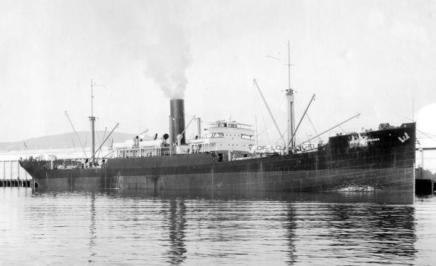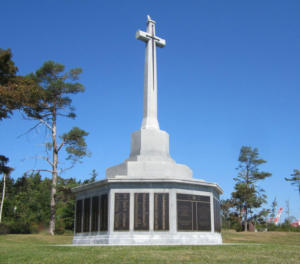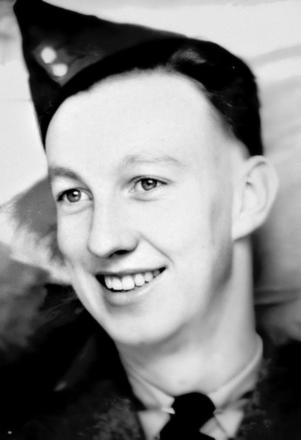Bretteville-sur-Laize
Canadian War Cemetery, France

copyright © Wartime Heritage Association
Website hosting courtesy of Register.com - a web.com company
Wartime Heritage
ASSOCIATION
Remembering World War II

Name:
Rank:
Service No:
Service:
Date of Birth:
Place of Birth:
Date of Enlistment:
Place of Enlistment:
Address at Enlistment:
Age at Enlistment:
Height:
Complexion:
Eye Colour:
Hair Colour:
Marital Status:
Trade:
Religion:
Next of Kin:
Date of Death:
Age at Death:
Cemetery:
Reference:
Fraser Kenneth MacLeod
Sources
Veterans Affairs Canada
Commonwealth War Graves Commission
Commonwealth War Graves Commission
U-boat.net
Convoy Records
Steve MacDonnell, Calgary, a nephew of Lance Corporal Fraser
MacLeod, information and assistance in the preparation of the
Remembrance Page.
Fraser Kenneth MacLeod
Lance Corporal
F/56453
North Nova Scotia Highlanders
July 6, 1921
New Campbellton, Victoria Co., NS
March 10, 1943
Halifax, NS
New Campbellton, Victoria Co., NS
21
6 feet, 2 inches
Medium
Grey
Blond
Single
Carpenter/Truck Driver
Presbyterian
Kenneth Neil MacLeod (Father) New Campbellton,
Victoria Co., NS
August 14, 1944
(Killed in Action)
23
Bretteville-sur-Laize Canadian War Cemetery, France
X. F. 3. (Plot 10, Row F, Grave 3)
Commemorated on page 375 of the Second World War Book of Remembrance
Displayed in the Memorial Chamber of the Peace Tower in Ottawa on August 9
Fraser MacLeod’s story is unique.
Lance Corporal Fraser Kenneth MacLeod was the son of Kenneth Neil MacLeod and Catherine
Anne (MacLennan) MacLeod and the brother of Roderick Leland MacLeon, Donald John MacLeod, Louise
Catherine MacLeod, Ernest Francis MacLeod, and Olive Kathleen MacLeod.
While born in New Campbellton, Victoria Co., NS in 1921, he lived in Sydney between November
1923 and June 1926. He completed grade nine in New Campbellton and left school at sixteen and
worked at farming. His was his intention to purchase a farm after the war. In fact, he borrowed two
hundred and twenty-five dollars from his father to buy a property, with a balance that came due on the
land while he was serving overseas. His father paid the balance for him.
He was eighteen when World War II broke out and he initially joined the Merchant Navy. He
served on the SS Empire Crossbill.
Fraser’s father was quite a jack of all trades and always kept a forge, even in his 70s. All four of
his sons took an interest in the trades and Fraser took to working with metals, a knowledge that would
serve he, his shipmates, and the ship well in the future.
On one of his crossings the ship on which Fraser served had a major malfunction and was falling
behind the convoy. A plea for someone with some metal-working experience was made and Fraser
volunteered. After they rigged up a crude bellows and having lots of coal he was able to forge a critical
part that they then installed. The part held until they got to port.
The SS Empire Crossbill was
constructed in March 1919 as West
Amargosa for US Shipping Board
(USSB) and later laid up as part of the
reserve fleet. On November 14, 1940
it was given to Britain and renamed
Empire Crossbill.
The SS Empire Crossbill
departed Halifax, carrying steel and
general war supplies, on April 9, 1941
with Convoy SC 28. The ship arrived
in Liverpool on April 28, 1941 en-
route to West Hartlepool, Co. Durham,
an industrial steel town. On May 1, 1941 the ship joined Convoy 228 on the Clyde and arrived in
Methil, Fife on May 5, 1941, and Middlesbrough, a large post-industrial town on the south bank of the
River Tees in the county of North Yorkshire, on May 30, 1941. The ship then moved on to the port at
Tyne and returned to Middlesbrough departing there on June 2. On June 10, 1941 the ship joined
Convoy EC 31 at Southend, Essex and sailed to Lock Ewe on June 14, 1941. It then joined Convoy OB
334 at Liverpool en-route to Halifax.
Fraser, however, did not leave the United Kingdom on the ship and remained in England. On the
returned voyage from North America with Convoy SC 42, the SS Empire Crossbill was torpedoed off
Greenland on September 11, 1941 with all crew lost. The ship’s crew manifest listed Fraser MacLeod
as one of the casualties. Fraser, in England, saw the list of crew, including his own name, in a
newspaper and sent a telegram to his parents in Nova Scotia assuring them he was alive and safe.
While in England he had boarded with a Mrs. Ryan in Middlesbrough. After one of his trips he
returned to find that the house had been destroyed in one of the enemy bombings of the city. Lost in
the destruction of the house, was his belongings, including an accordion he had purchased. Fraser was
known to be quite musical. He had money, a sum of two hundred dollars, banked in the name of Mrs.
Ryan to be returned to him on his return or sent to him at the end of the war. He lived in England
between September 1940 and August 1941.
The strategic importance of Middlesbrough’s iron and steel industries saw it become the first
major British settlement to be bombed by the Luftwaffe during the Second World War. The first attack
came on May 25, 1940 when a lone bomber dropped 13 bombs.
Fraser returned to Nova Scotia in the fall of 1941 with the intent of joining the Canadian Navy;
however, the navy was not taking very many recruits, even experienced ones and while waiting for a
call from the Royal Canadian Navy the Canadian Army called him for service.
Prior to his army enlistment, Fraser was employed as a carpenter with the Dominion Steel
and Coal Corporation, Sydney.
Following his enlistment in Halifax, he was transferred on April 16, 1943 for training at Aldershot,
NS. On July 16, 1943 he was admitted to the Camp Military Hospital diagnosed with diphtheria. He was
discharged on August 12, 1943 and granted twenty-one days sick furlough. He returned to Aldershot on
September 2, 1943. He attended a Bricklayers Course (Vocational Wing) in New Glasgow from
September 30, 1943 through January 15, 1944. During his time at New Glasgow, he was granted five
days Christmas leave. In January 16, 1944, he returned to Aldershot until February 19, 1944 when he
was transferred to Camp Debert.
Having trained in Canada he embarked Halifax for the United Kingdom on April 6, 1944, arriving
there on April 12, 1944. He embarked the United Kingdom on June 12, 1944 and disembarked in
France on June 13. He was appointed Lance Corporal on August 6, 1944.
On August 13, 1944 the North Nova Scotia Highlanders were located in the area near
Langommerie, France and during the night moved toward Bretteville-Le-Rabet in preparation for an
advance against the enemy which began on August 14, 1944.
Lance Corporal MacLeod was killed in action on August 14, 1944 and initially buried in the
Mondeville Canadian Military Temporary Cemetery. In 1946, Lance Corporal MacLeod was reburied in
the Bretteville-sur-Laize Canadian War Cemetery, France.
Fraser MacLeod’s name is also listed on the
Halifax Memorial, Point Pleasant Park, Halifax, that
commemorates among others, Canadian merchant
seamen who lost their lives at sea. (His name was
incorrectly listed on the crew manifest when the SS
Empire Crossbill was lost with all crew on September
11, 1941)

Empire Crossbill




- World War I - Menu
- WWI Stories and Articles
- Photos - Yarmouth Soldiers
- Selection of World War I Songs
- WWI Casualties of Yarmouth, NS
- Those Who Served - Yarmouth, NS
- WWI Casualties Digby Co. NS
- WWI Casualties Shelburne Co. NS
- Merchant Mariners (1915) Yarmouth, NS
- Canadian Forestry Corps - Non Yarmouth Birth/Residence Enlistments
- US Draft Registry - Yarmouth NS Born


- World War II - Menu
- WWII Stories and Articles
- Telegraphist Air Gunners
- WWII Casualties of Nova Scotia
- US Casualties with NS Connection
- Far East/Pacific Casualties with NS Connection
- Merchant Navy Casualties Nova Scotia
- Nova Scotia WWII Casualties Holten Canadian War Cemetery
- D-Day Casualties - Nova Scotia
- CANLOAN Program Casualties - Nova Scotia
- Battle of the Bulge Casualties - Nova Scotia
- WWII Casualties Yarmouth NS
- Yarmouth Casualties - RCAF RAF Canadian Army WWII
- Yarmouth Co., Marriages WWII
- Casualties Non-Born/Residents with Connection to Yarmouth Co., Nova Scotia.
- WWII Casualties Digby Co., NS
- Non-Nova Scotian WWII Casualties Buried in Nova Scotia
- WWII RCAF Casualties Aged 16-18
- Brothers/Sisters Who Served - World War II














